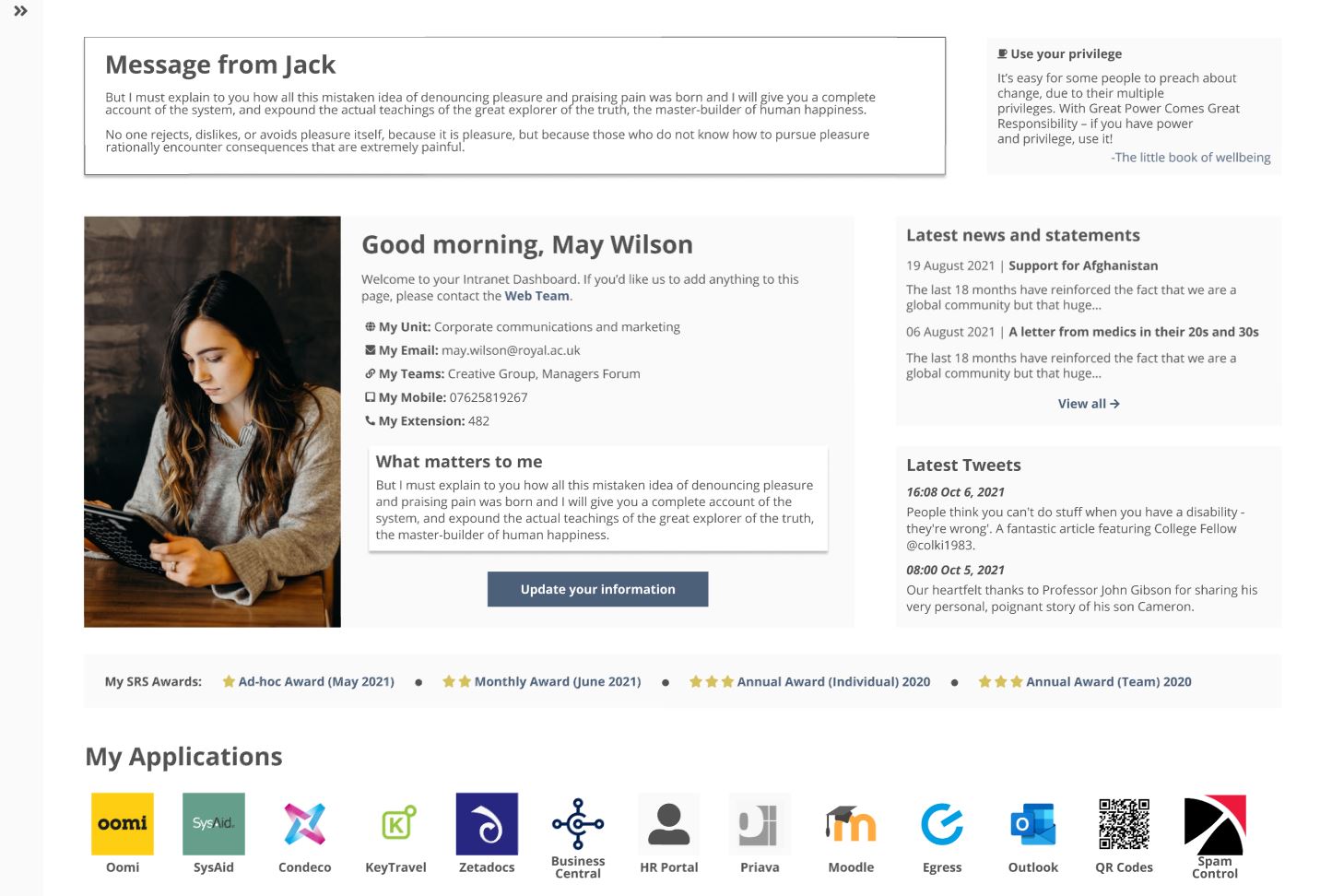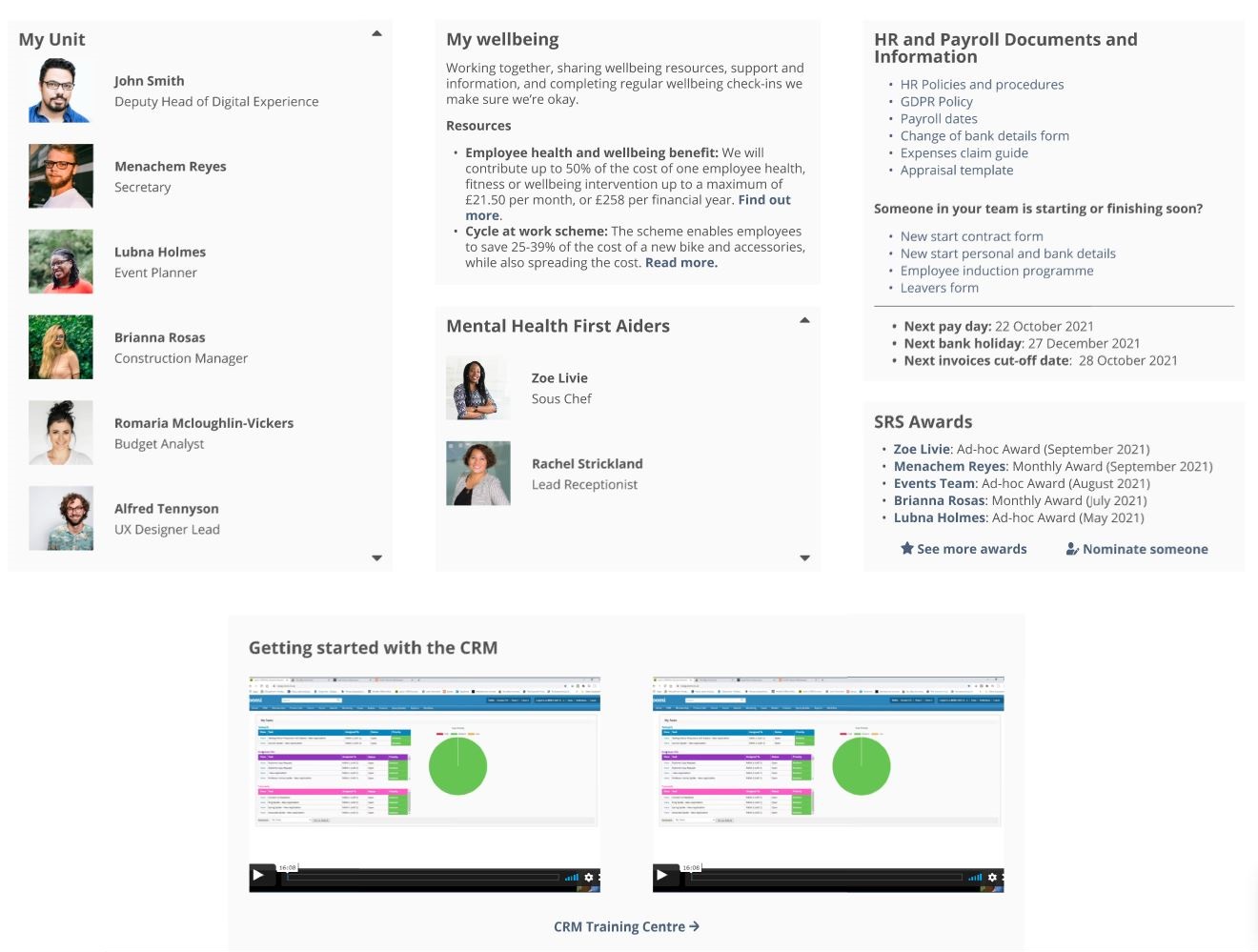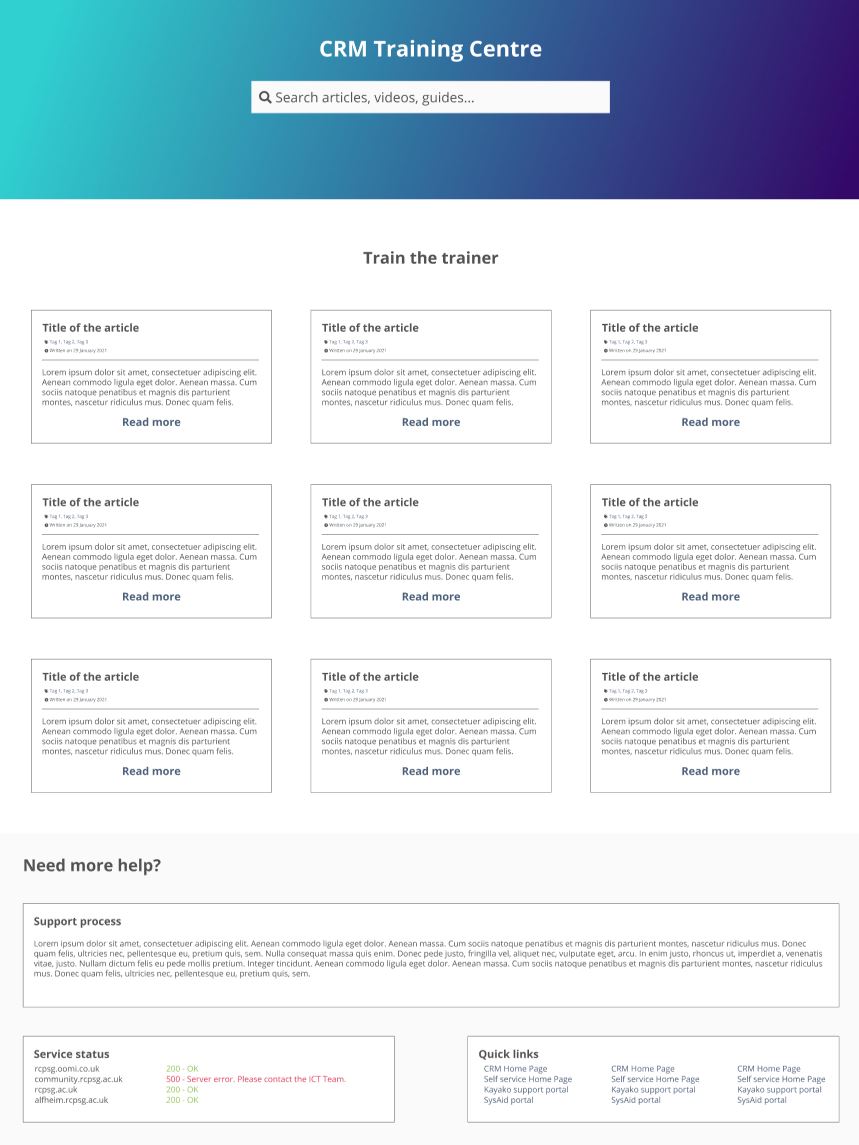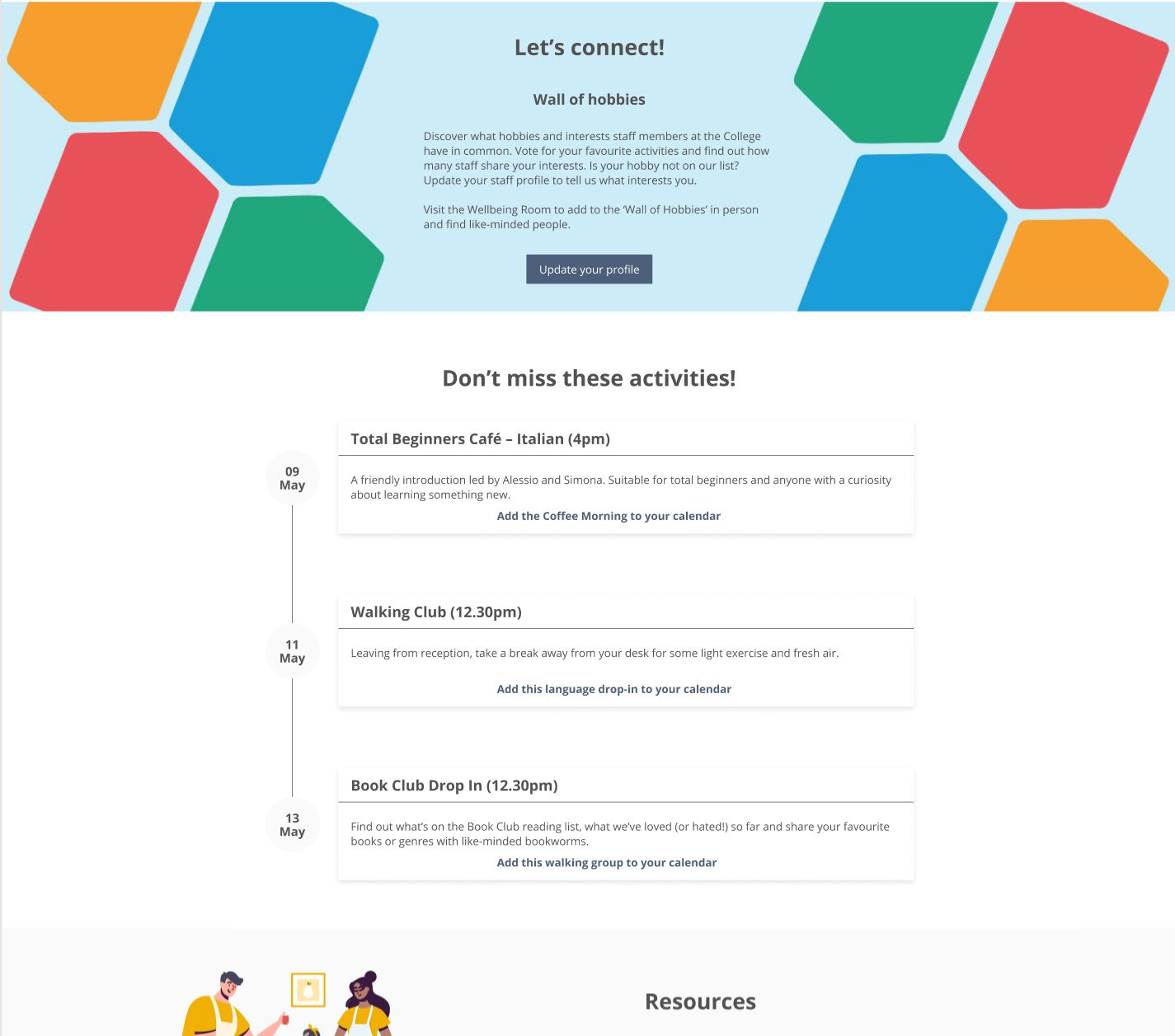Project Intranet
Designing a company Intranet that meets the needs of internal stakeholders, improves communication and transparency, and streamlines internal processes.
Read case studyThe Problem
The organisation was facing several communication challenges within their multi-disciplinary teams, and the employees were using a variety of tools for communication such as emails, instant messaging, as well as different department-specific platforms, resulting in scattered information, delays in communication and lack of transparency across the organisation. The senior leadership team decided to develop a company intranet that would bring all the internal communication under one single platform and improve the overall communication within the organisation.
We need a consistent way to communicate with our employees, and we need to do it with a modern-looking and easy to use application.
The Objective
The objective was to design and develop a company intranet that would meet the needs of all internal stakeholders, improve communication and transparency, and streamline internal processes.

The Challenges
- Lack of standardisation: One of the biggest challenges (if not the biggest) was to bring all the scattered information under one platform, and standardise the way things were communicated to employees.
- User Adoption: Departments were used to using their own solutions to communicate and share information, so we had to find a way to create a new habit for the entire organisation.
- Different needs: Different departments had different needs and requirements, and I needed to bring all those needs together, trying to design for what was probable and not possible.
- Integrations: The solution needed to be integrated with the organisation's current tools and platform, as well as being open to future integrations with new products.
- Security: One of the critical challenges was to ensure the security of the Intranet, making sure that sensitive information remained locked while at the same time fostering a culture of transparency.


The Actions
- User Research: I conducted user research using a variety of techniques (e.g. Listening tours, Design Studio, How Might We, etc...) to understand the current communication challenges faced by the employees and the senior leadership team, as well as their needs and expectations from a new Intranet. I also ran organisation-wide surveys and conducted ethnography research to understand how employees were communicating within and without their departments.
- Journey Mapping: I developed journey maps to understand the current communication flows of each department, identifying flaws and pain points the new Intranet could address.
- Wireframing: I used Figma to create wireframes to visualise the overall architecture of the new Intranet, and to get feedback quickly and early in the design process.
- Prototyping: I used Figma to create interactive prototypes as well, simulating the final product and getting the approval of the senior leadership team. The prototypes have also been useful to get feedback from the employees, especially on the usability of the new design.
- User Testing: We conducted user testing with participants from each department to make sure that the new platform satisfied their needs. This was also a great way to remove some minor blocks that weren't discovered with the prototypes.
Overcoming The Challenges
- Lack of standardisation: I worked closely with employees at all levels to understand their specific needs, and developed ways to standardise the information and communication across the organisation.
- User Adoption: I worked with the senior leadership team to organise training sessions with employees on how to use the Intranet and its components. Since the Intranet was powered by a CMS, we managed to open the back end to some employees, that later took control of parts of the Intranet.
- Different needs: The design of the new Intranet respects the different needs of every department in the organisation, and designing in collaboration with them made sure that we could satisfy all their needs.
- Integrations: I worked closely with the ICT Department to make sure that every tool and platform could be integrated with the Intranet. The choice of using a well-known CMS was behind the success of the Intranet, as the organisation can now develop their integrations, or use the myriad of plugins available online.
- Security: Thanks to my knowledge of Linux-based systems, I suggested to the ICT Team to host the Intranet in an internal Ubuntu VM, ensuring that all security standards and protocols were met.

The Results
The new Intranet was a tremendous success since its launch, and it managed to bring all the internal communication and information sharing under one single platform. The overall communication within the organisation improved, and several digital projects have been completed since the Intranet launched to expand its capabilities. Today, the Intranet I developed is used to share information, communicate staff-wide messages, organise staff activities and as a tool to present new employees.